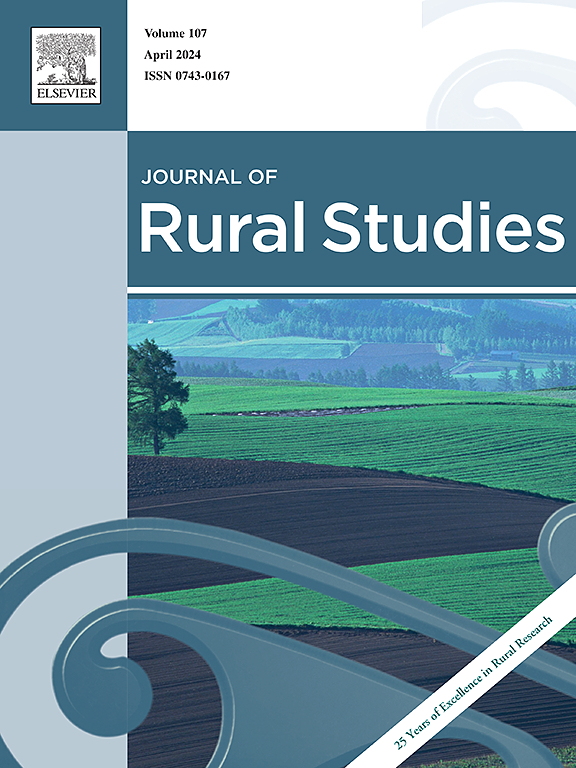Repeasantization and synergy between community-based tourism and family farming
IF 5.7
1区 社会学
Q1 GEOGRAPHY
引用次数: 0
Abstract
Community-based tourism has emerged as a potential element in the pluriactivity strategies of farmers. Its impact on the local economy and population structure has sparked considerable debate. Some case studies have shown that it can contribute to de-peasantization, foster internal conflict or exacerbate socioeconomic disparities. By contrast, other studies suggest that it helps sustain peasant economies in crisis. In such cases, it is usually argued that the income generated from tourism plays a vital role in supporting the financial sustainability of peasant households (i.e. complementarity). However, the present paper asks whether, under certain circumstances, tourism can also drive the development of agricultural activity (i.e. synergy) and, consequently, encourage processes of repeasantization. The conclusion of the present study is that it can and does. That said, the synergy between agritourism and family farming requires two preconditions: 1) both the agricultural resources and the resources available for tourism activity are under the control of the local population; and 2) there exist mechanisms for the collective management of these resources. The paper centres on a comparative study of two rural communities in Latin America: one located in the southern region of the Peruvian Andes, and the other located in southern Costa Rica. The research, which has been ethnographic in nature, took place over a long period of time: three decades and one decade, respectively.
社区旅游与家庭农业的融合与协同
以社区为基础的旅游已成为农民多元活动战略的一个潜在因素。它对当地经济和人口结构的影响引发了相当大的争论。一些案例研究表明,它可能助长去农业化、助长内部冲突或加剧社会经济差距。相比之下,其他研究表明,它有助于在危机中维持农民经济。在这种情况下,通常认为旅游业产生的收入在支持农户的财政可持续性(即互补性)方面起着至关重要的作用。然而,本文提出的问题是,在某些情况下,旅游业是否也可以推动农业活动的发展(即协同作用),从而鼓励重复化进程。本研究的结论是,它可以而且确实做到了。也就是说,农业旅游与家庭农业之间的协同需要两个前提条件:1)农业资源和可用于旅游活动的资源都在当地人口的控制之下;2)存在对这些资源进行集体管理的机制。该文件的中心是对拉丁美洲两个农村社区的比较研究:一个位于秘鲁安第斯山脉南部地区,另一个位于哥斯达黎加南部。这项研究在很长一段时间内进行,从本质上讲是民族志研究,分别进行了30年和10年。
本文章由计算机程序翻译,如有差异,请以英文原文为准。
求助全文
约1分钟内获得全文
求助全文
来源期刊

Journal of Rural Studies
Multiple-
CiteScore
9.80
自引率
9.80%
发文量
286
期刊介绍:
The Journal of Rural Studies publishes research articles relating to such rural issues as society, demography, housing, employment, transport, services, land-use, recreation, agriculture and conservation. The focus is on those areas encompassing extensive land-use, with small-scale and diffuse settlement patterns and communities linked into the surrounding landscape and milieux. Particular emphasis will be given to aspects of planning policy and management. The journal is international and interdisciplinary in scope and content.
 求助内容:
求助内容: 应助结果提醒方式:
应助结果提醒方式:


